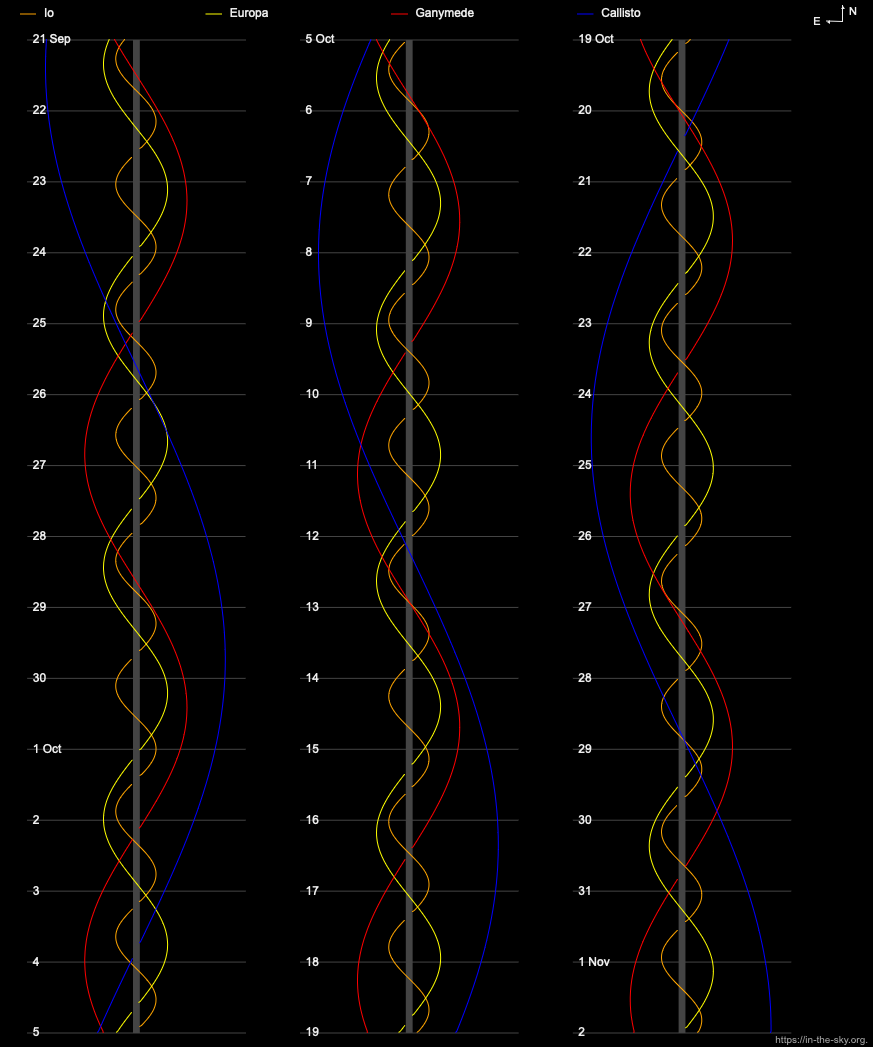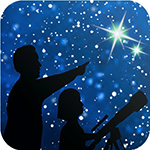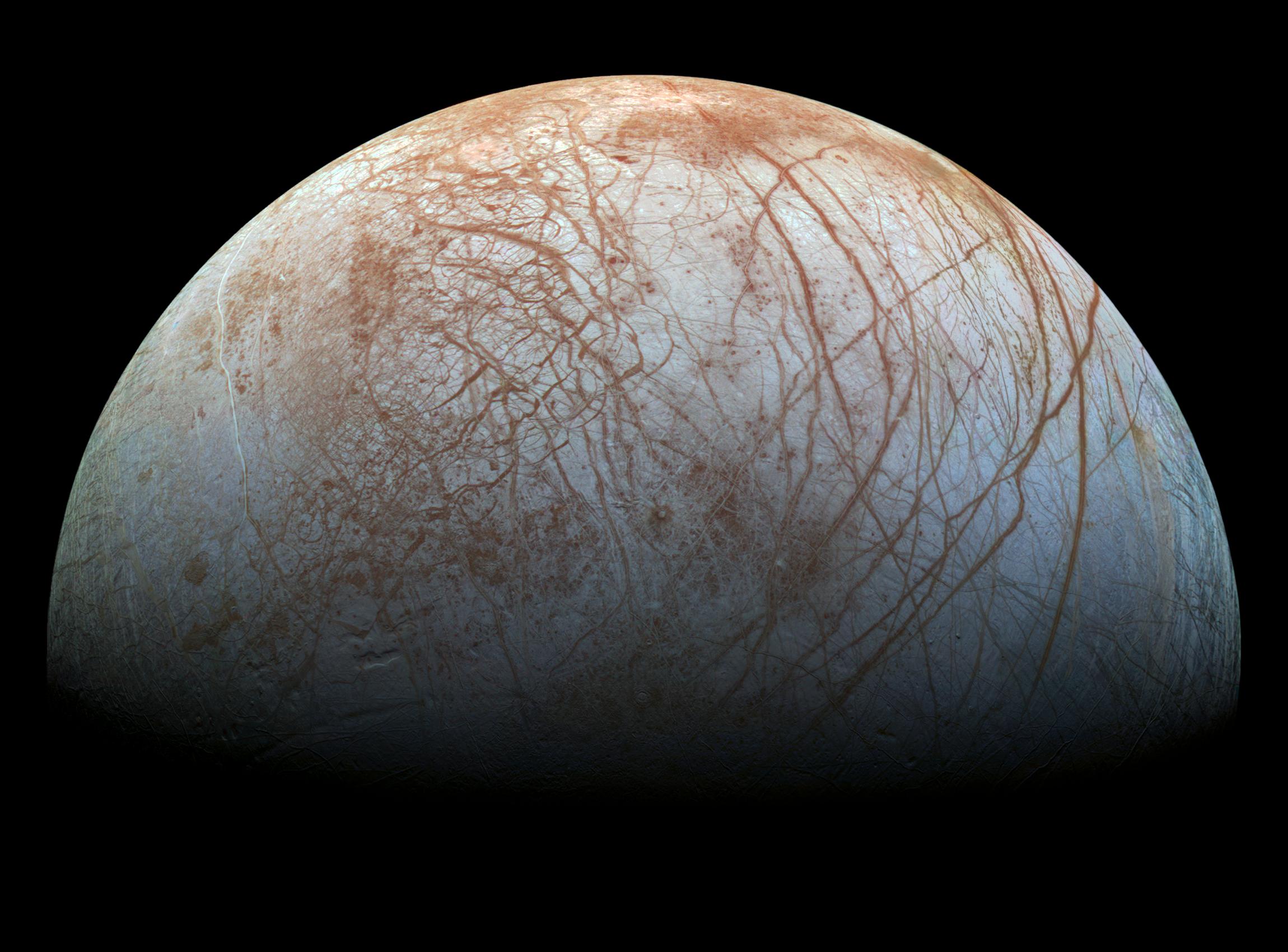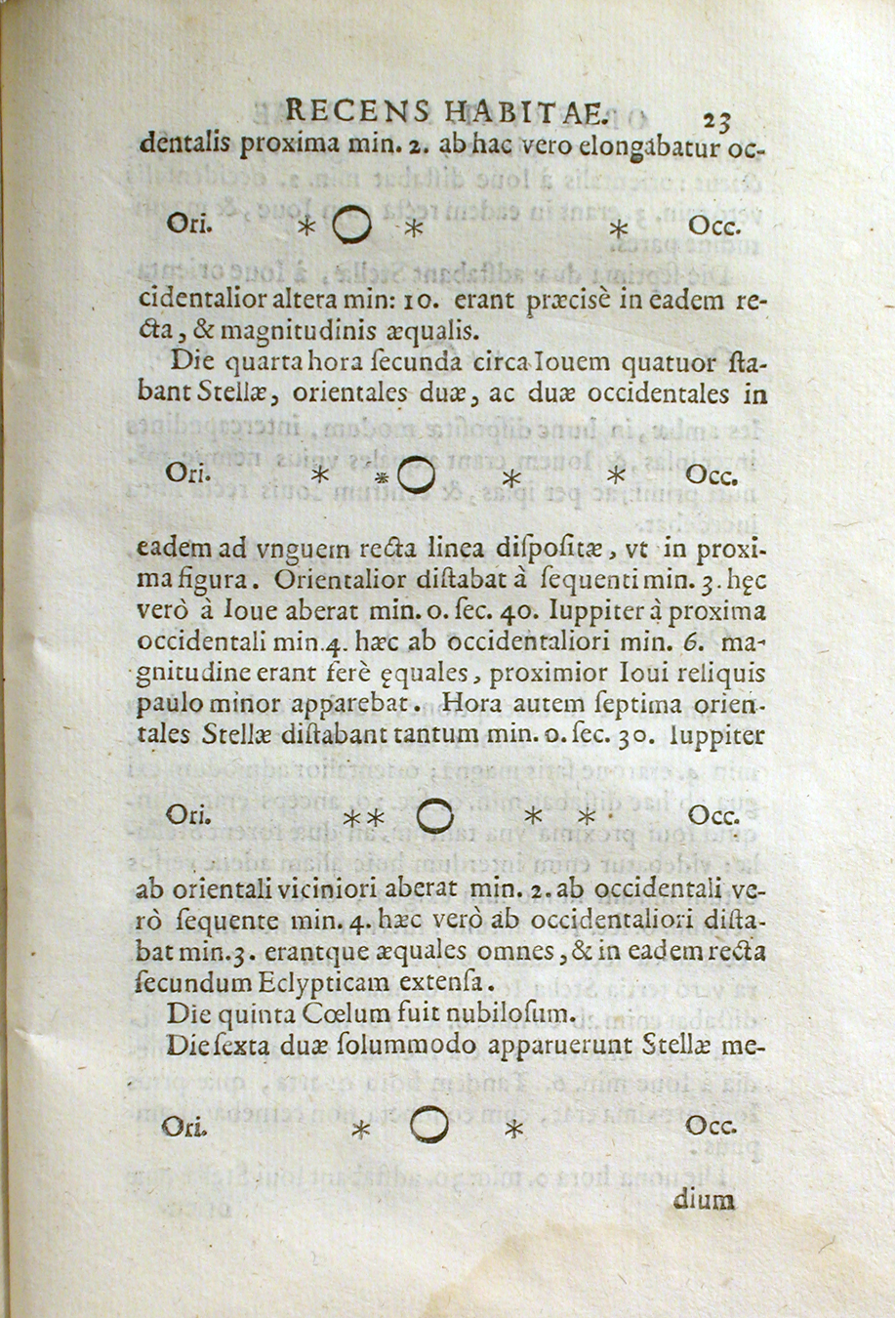“…We, too, are made of wonders, of great
and ordinary loves, of small invisible worlds,
of a need to call out through the dark.”
From In Praise of Mystery: A Poem for Europa by Ada Limon
Europa
As autumn begins, if you’re up late, you may notice a bright point of light rising in the east. Look a bit closer, with a pair of binoculars, and you’ll notice it’s not a star at all. While stars look point-like no matter how big your backyard telescope, this light appears as a circle under closer examination. Even more curious, you will likely see a line of smaller dots on one or both sides. Congratulations! You’ve rediscovered the king of the planets – majestic Jupiter – and its four largest moons.
Galileo’s drawings of Jupiter and its Medicean Stars from Sidereus Nuncius. Image courtesy of the History of Science Collections, University of Oklahoma Libraries.
Galileo famously chronicled the four moving dots near Jupiter and surmised that they were orbiting the distant world. While Jupiter has well over 80 discovered moons as of September 2023, these brightest four are called the “Galilean Moons” – Io, Europa, Ganymede, and Callisto. (Great mnemonics exist to remember these in order of distance from Jupiter, such as “I Eat Green Caterpillars”) You can follow these like Galileo did, using stargazing apps or the handy image below. A favorite beginning observing challenge is to track the movement of the Galilean Moons over the course of many nights. Even within a few hours, you will notice them moving in relation to Jupiter, just as Galileo did.
Fast forward 414 years, and NASA will be sending a robotic mission to investigate the surface of one of these distant worlds. The Europa Clipper Mission is launching to the cold, icy moon in 2024, to begin orbiting in 2030. With its salty oceans covered by ice, Europa was chosen as an excellent location to continue the search for life outside of Earth. Clipper will be the largest spacecraft ever sent to another planet, designed to withstand Jupiter’s punishing radiation. Once it arrives at Jupiter in 2030, NASA plans to do about 50 flybys of Europa, mapping almost the entire surface of this watery world.

The position of the Galilean Moons of Jupiter in October 2023: https://in-the-sky.org/jupiter.php
What was once only dreamed of in the small telescope of Galileo, or in great works of fiction, NASA is turning our wildest imagination into reality. One of the celebrated quotes from the classic 2010: Odyssey Two warns, “All these worlds are yours, except Europa. Attempt no landing there.” Science fiction fans can feel relieved knowing that writer Arthur C. Clarke gave his blessing for the Europa Clipper mission.
Join the Europa Message in a Bottle Campaign to send your name with the spacecraft, hear the rest of the poem by the US Poet Laureate, and learn more about the wonders of space travel with the Clipper Mission: https://europa.nasa.gov/participate
Watch a wonderful Clipper webinar with Dr. Cynthia Phillips, planetary geologist with the mission: https://www.youtube.com/live/RnnLJBLRBCA?feature=shared&t=269
This article is distributed by NASA’s Night Sky Network (NSN).
The NSN program supports astronomy clubs across the USA dedicated to astronomy outreach. Visit nightsky.jpl.nasa.gov to find local clubs, events, and more!



